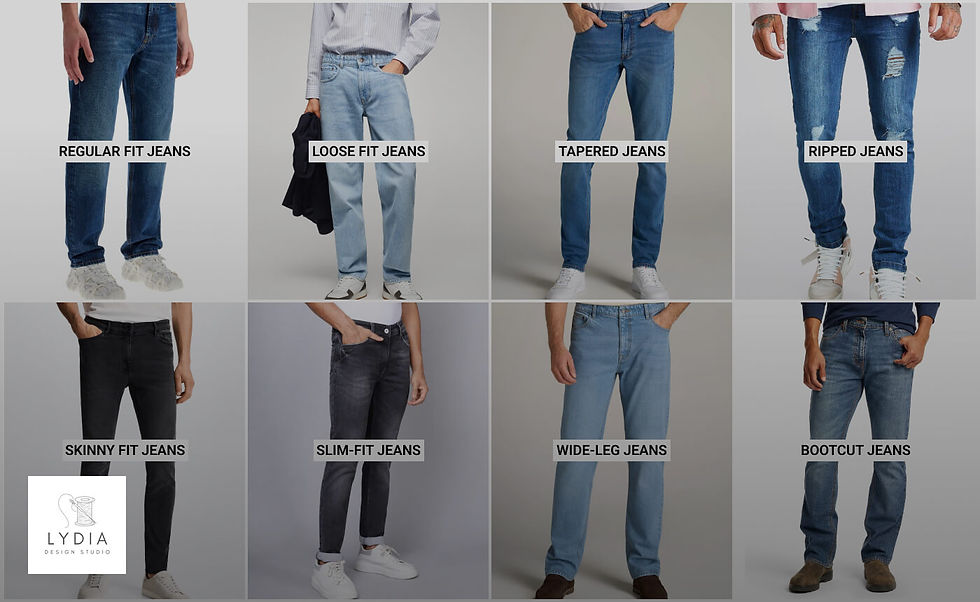Apparel Manufacture Analysis: Behind the stitches
- Lydia Design Studio

- Jun 22, 2023
- 3 min read

Our daily lives are significantly impacted by clothing manufacturers' multibillion-dollar global garment business. The modern world depends heavily on garment production, from the clothes we wear to the fashion trends we follow. Every garment undergoes an intricate production process that includes careful planning, expert artistry, and cutting-edge technology.
We will dig into the complex world of clothing manufacturing in this post and examine the numerous steps. The industry covers various tasks, from designing and sourcing materials to cutting, stitching, and finishing apparel. But the industry's dynamics are always changing, impacting customer desires, ecological issues, and technology improvements.
The design and development phase is when a garment's journey starts. Each collection's creative concept is greatly influenced by the fashion designers who create it. They lay the groundwork for the production process with their knowledge of customer preferences, trend predictions, and concept translation into real clothes designs.
The sourcing and procurement phase begins once the designs are complete. Quality, pricing, and sustainability are considered when choosing raw materials and textiles. Additionally, throughout this phase, suppliers must be assessed, ethical and environmental standards must be followed, and a reliable supply chain must be maintained.
Apparel fabrication
The design and development stages are when imaginative ideas are turned into physical clothes during clothing manufacturing. Designers generate concepts, create mood boards, and produce sketches perfectly expressing the intended clothing. Making use of premium fabrics and raw materials is essential for producing clothing that is both functional and aesthetically beautiful.
Design studios conduct thorough studies to determine the dependability, quality, and compliance of possible suppliers. In the process of making clothing, upholding constant quality standards is crucial. Precision cutting is essential to ensure correct garment parts that adhere to the original pattern. The stitching procedure is streamlined by assembly line production, enabling effective and standardized clothing manufacture.
Clothing production requires experienced workers knowledgeable about various sewing methods and garment design. The overall quality of the completed product is influenced by sewing methods, seam finishes, and the correct alignment of the garment's parts. Finishing entails adding zippers, buttons, and other fasteners to the clothing to improve its utility and aesthetic appeal.
Confronting challenges and opportunities of the market
Concerns over the clothing industry's ethical standards and environmental effects are growing. Sustainable production techniques, such as employing eco-friendly products and cutting waste, are becoming more important.
Traditional manufacturing centres' escalating labour costs have prompted businesses to look into alternate production methods. Artificial intelligence and robotic sewing machines, for example, provide prospects to increase productivity and lower labour costs.
The garment business has difficulties due to global supply chain disruptions brought on by trade disputes, natural catastrophes, and pandemics. Businesses must build robust supply chain networks, expand their alternatives for procurement, and improve their rapport with suppliers. The garment market is changing due to consumer desire for individualised goods and distinctive experiences.
The emergence of e-commerce has altered how customers purchase clothing, with online sales expanding quickly. Influencer marketing, social media, and digital platforms significantly contribute to brand awareness and customer engagement.
Impact Lydia design studio on the market
A well-known fashion design studio that has significantly impacted the garment industry is Lydia Design Studio.Lydia was founded to redefine fashion through creativity and sustainability, and it has since become known as a pioneer in producing eye-catching, cutting-edge designs for the best clothing manufacturers in the USA.
Fashion design firm Lydia Design Studio is renowned for its innovative and imaginative methods, which helped some of the best clothing manufacturers for startups. They continuously push the envelope with their collections by adding distinctive details, cutting-edge shapes, and unconventional fabrics.
Lydia creates designs that attract audiences and raise industry standards by fusing aesthetic vision with technological know-how. Leading international companies have developed strategic alliances and collaborations with Lydia Design Studio. They actively look for eco-friendly products and use sustainable production techniques to lessen their environmental impact.
Lydia encourages openness and moral behaviour across its supply chain, providing decent working conditions and assisting regional communities. Lydia Design Studio has received accolades from the industry for its excellent contributions to fashion production and design. They have received important honours and distinctions in the industry for their creative ideas, dedication to sustainability, and teamwork.
Manufacturing clothing is intricate and multidimensional, including several steps, from design and development to packing and distribution. The sector has both possibilities and problems, from worries about sustainability to developments in automation.
.png)



Comments